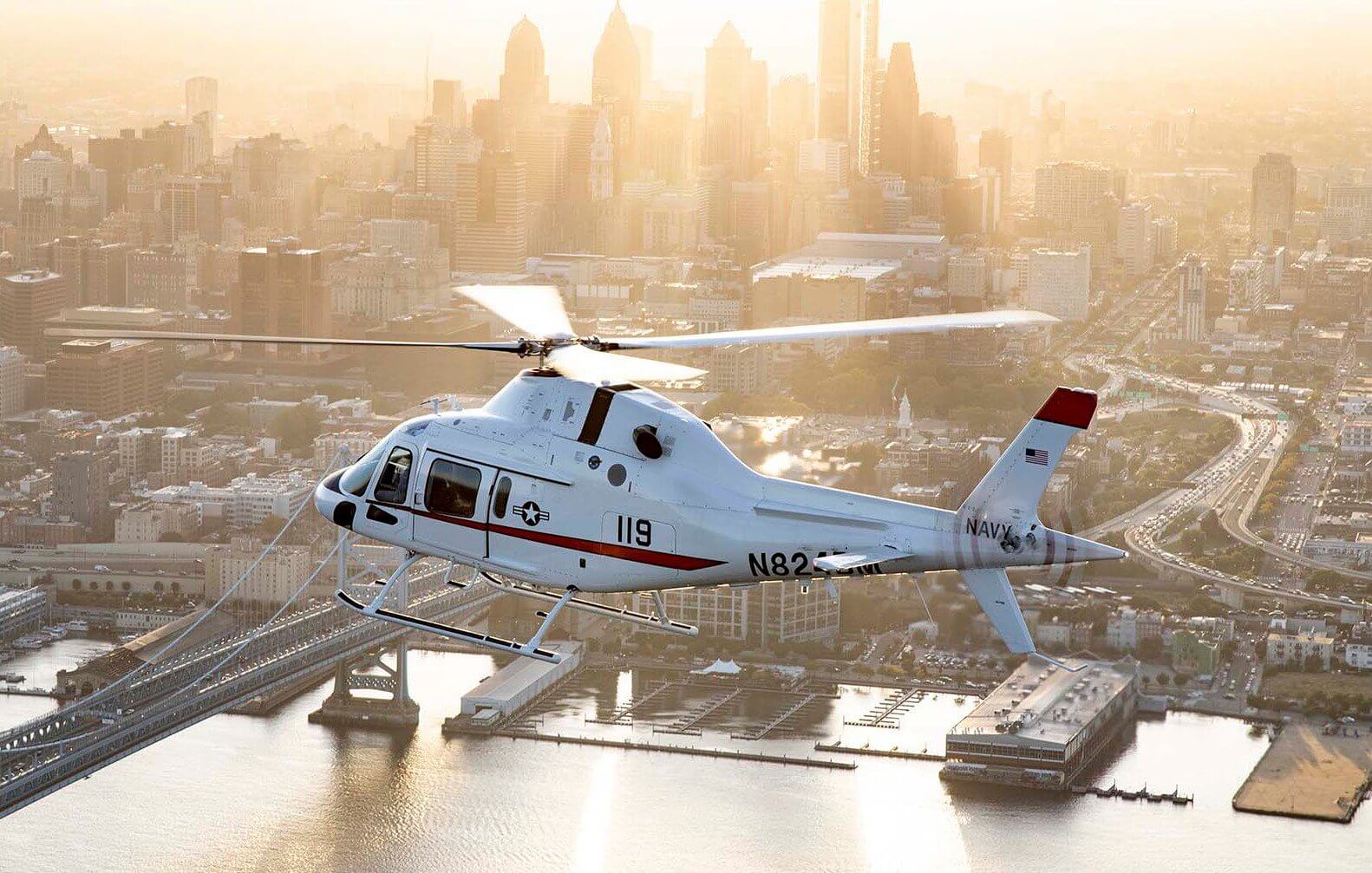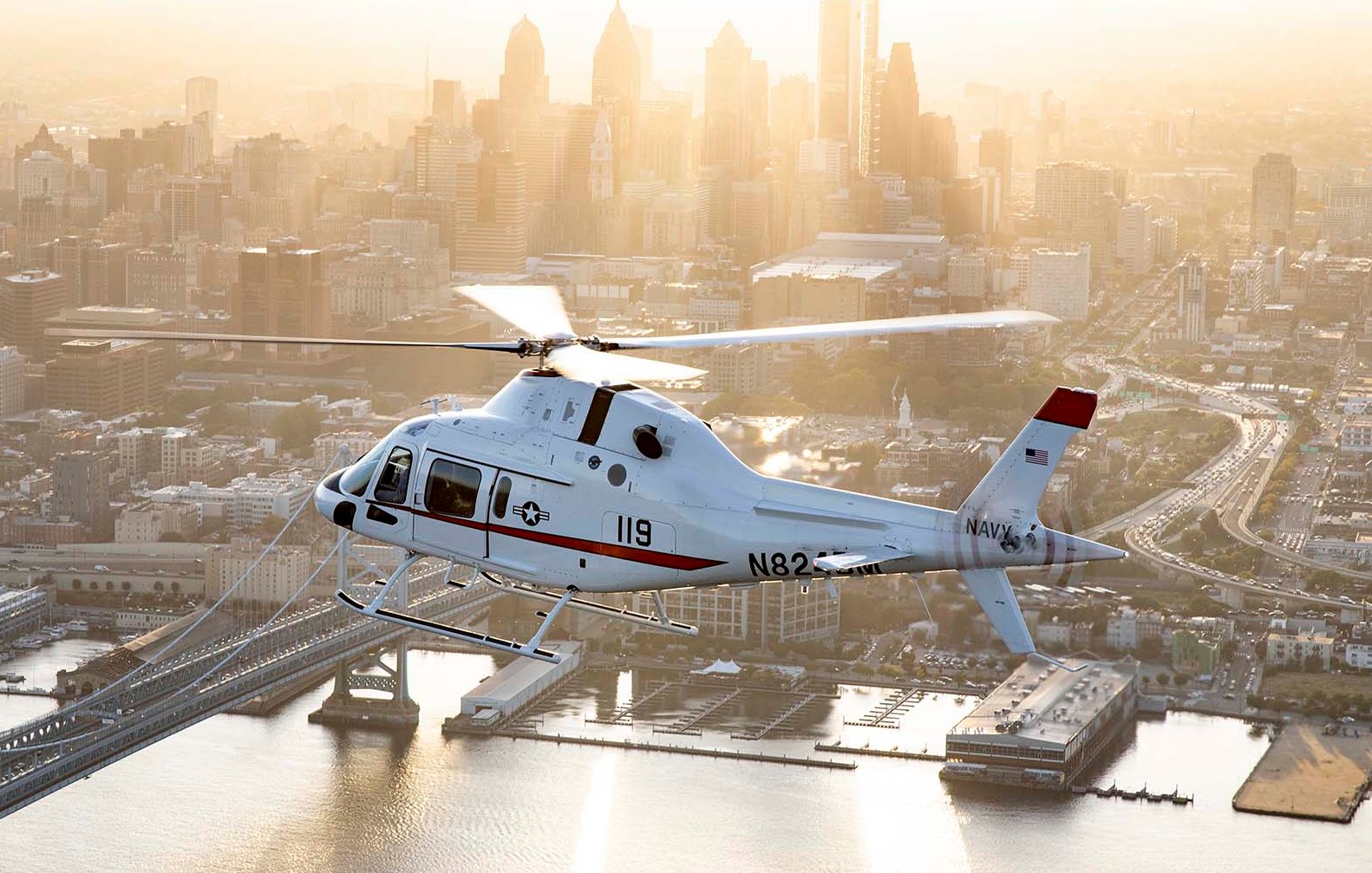Leonardo Helicopters has beat out Airbus and incumbent Bell for a $176 million deal to begin building the U.S. Navy’s new training helicopter, the TH-73A.
The Navy announced Jan. 13 it chose Leonardo’s TH-119, based on the commercial AW119, over the Airbus H135 and Bell 407GXi to replace the aging TH-57 Sea Rangers on which all Navy, U.S. Marine Corps, and U.S. Coast Guard rotorcraft pilots are trained.

“On the cusp of celebrating nearly 40 years of operating in Philadelphia, Leonardo is thrilled the U.S. Navy has selected our TH-119-based offer and us as a local and long term partner,” Leonardo chief executive Alessandro Profumo said.
Gian Piero Cutillo, managing director of Leonardo Helicopters, called the Navy’s decision “brilliant news” and “a ringing endorsement for our solutions setting new industry standards for training. We are committed to working with the U.S. Navy to ensure future pilots meet all evolving service requirements.”
The new helicopter will meet advanced rotary-wing and intermediate tiltrotor training requirements for the Navy, Marine Corps, and Coast Guard through 2050. The TH-73A will be manufactured in the U.S. with assembly taking place, through Federal Aviation Administration (FAA) Airworthiness certification, in the contractor’s FAA part 21 facility in Philadelphia, Pennsylvania.
An initial $176.5 million outlay covers the first 32 aircraft — which the Navy will call the TH-73A — plus spare parts, support equipment, flyaway kits, hoists, sling loads, maintenance and instructional data and training for maintenance personnel, according to the Defense Department contract announcement. The total contract value is $648.1 million for the procurement of 130 aircraft. Helicopter deliveries are scheduled to begin in calendar year 2020 and continue through calendar year 2024.
“Today marks a great team effort to procure and deliver a helicopter trainer for the next generation of helicopter and tiltrotor pilots for the Navy, Marine Corps, and Coast Guard,” said James F. Geurts, assistant secretary of the Navy for research, development and acquisition. “I’m proud of the aggressive work the team did to leverage the commercial industrial base to get this capability to the warfighters, and our nation, at the best value to the taxpayer. This effort is key to ensure the readiness of our Naval Aviators for decades to come.”
A singular Navy requirement was for any new trainer to be instrument flight rules (IFR) certified, meaning the FAA must clear the aircraft through bad weather, where visibility is limited, using only onboard avionics and navigation instruments. The TH-119 in July became the first single-engine helicopter in decades to earn that certification. The 407GXi followed as the second recently IFR-certified single engine aircraft in August, whereas the twin-engine H135 already was IFR-certified.
The helicopter itself is one part of an overarching helicopter training enhancement program called the Advanced Helicopter Training System (AHTS).
“The new Leonardo TH-73A helicopters are the cornerstone of AHTS, which is the planned replacement to address the capability and capacity gaps of the current aging TH-57 Sea Ranger helicopter training platform,” said Capt. Todd St. Laurent, Naval Undergraduate Flight Training Systems (PMA-273) program manager. “The TH-73A will provide a modern helicopter training platform that will serve rotary and tiltrotor training requirements into the foreseeable future. These new helicopters will ensure the Navy has capacity to train several hundred aviation students per year at Naval Air Station Whiting Field in Milton, Florida.” PMA-273, at Naval Air Station Patuxent River, Maryland, oversees AHTS.
The TH-119 features a four-screen all-glass Genesys Aerosystems cockpit, which is also installed on the twin-engine AW109 Trekker. It is the fourth cockpit Leonardo went through in eight years of developing the AW119. Certifying the aircraft with the Genesys cockpit installed took seven months. IFR certification followed several months later.
William Hunt, managing director of Leonardo Helicopters Philadelphia said, the company’s “plan since day one has been to offer the U.S. Navy the training capabilities they asked for, without compromise. We are honored to deliver on that promise, build the new fleet in Philadelphia and maintain it from Milton, Florida.”
Both Bell and Airbus will have a chance to review the Navy’s decision and launch a protest, which would halt work on the program for up to 100 days while the U.S. Government Accountability Office weighs any potential argument against Leonardo. Neither company has announced plans to protest the Navy’s decision, although Bell hinted in a statement provided to Vertical that it does not regard the award as final.

“While Bell was not initially selected for the Navy’s Advanced Helicopter Training System TH-73 aircraft, we are proud to have supported Naval Aviation helicopter training since 1947, and will continue to support the TH-57, which has been in service since 1969,” a Bell spokesperson said in an email. “Bell’s offering for the TH-73 is the instrument flight rules-certified 407GXi, which provides best value for the Navy through its training capability, low risk transition and lowest life cycle costs.”
Bell also currently supports Navy and Marine Corps fleet operations with the AH-1Z Viper, UH-1Y Venom, and the Bell-Boeing V-22 Osprey.
Airbus is awaiting a full debrief from the Navy before it decides whether to protest or “any possible next steps,” the company said.
“Although we are disappointed by the outcome of the U.S. Navy’s selection for its new helicopter trainer, we respect the process followed by the Navy during the acquisition,” an Airbus spokesperson told Vertical in an emailed statement. “We remain confident nonetheless that the proven IFR-certified Airbus H135 would provide the most reliable and best-value training system for the Navy’s future aviators.”
Leonardo adds the Navy trainer program to its win, with partner Boeing, of the U.S. Air Force contract to replace its aging UH-1N nuclear missile field patrol aircraft. The team successfully pitched a militarized version of the AW139 called the MH-139.
“We are proud to be a core contributor to the future of U.S. defense,” Profumo said.









